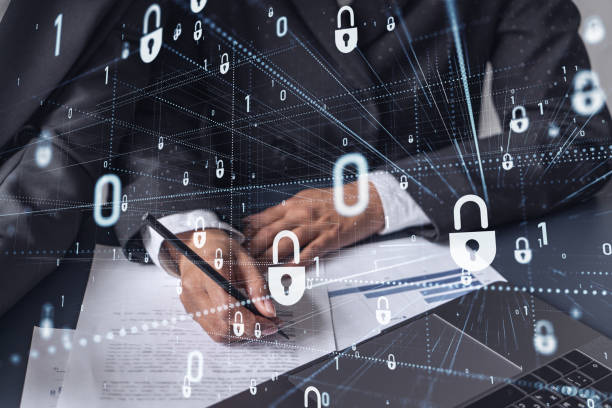The Standard for System Security Controls: A Practical Guide to Strengthening Cyber Defenses
Cyber threats are evolving at an unprecedented pace. In 2024 alone, cyberattacks increased by 38% compared to the previous year, with businesses facing more sophisticated ransomware, phishing, and insider threats than ever before. The cost of a data breach now averages $4.45 million, making security controls non-negotiable for organizations of all sizes.
But what exactly defines a strong security posture? Enter the Standard for System Security Controls (SSSC)—a structured approach that ensures businesses implement robust, actionable security measures to safeguard their data and systems. Whether you’re an IT manager, cybersecurity analyst, or business leader, understanding these standards can make or break your security strategy.
Let’s dive deep into what system security controls are, why they matter, and how you can apply them to fortify your defenses against modern cyber threats.
What Are System Security Controls?
System security controls are technical, administrative, and physical measures designed to protect data, networks, and IT systems from unauthorized access, breaches, and cyber threats. These controls fall into three main categories:
- Preventive Controls – Stop threats before they occur (e.g., firewalls, access controls, encryption).
- Detective Controls – Identify security incidents in real time (e.g., intrusion detection systems, SIEM solutions).
- Corrective Controls – Mitigate damage after an attack (e.g., incident response plans, system backups).
By implementing a layered security approach, organizations can reduce vulnerabilities and stay ahead of emerging threats.
Key System Security Standards to Follow
Several frameworks define the best practices for system security controls. The most widely recognized include:
1. NIST Cybersecurity Framework (CSF)
The National Institute of Standards and Technology (NIST) provides a risk-based approach to security, helping organizations align their defenses with real-world threats. The framework consists of five core functions:
- Identify (Assess risks, assets, and vulnerabilities)
- Protect (Implement safeguards to prevent cyber incidents)
- Detect (Monitor systems for security events)
- Respond (Take action to contain and minimize impact)
- Recover (Restore systems and strengthen defenses)
2. ISO/IEC 27001:2022
The ISO 27001 standard is a globally recognized framework for establishing an Information Security Management System (ISMS). It emphasizes risk management, continuous improvement, and compliance with regulatory requirements.
3. CIS Controls
The Center for Internet Security (CIS) Controls outlines 18 critical security controls that organizations should prioritize to defend against the most common cyber threats. These include:
- Asset Management (Inventory of IT resources)
- Access Control (Least privilege, multi-factor authentication)
- Continuous Monitoring (SIEM, threat intelligence integration)
By aligning with these frameworks, organizations reduce vulnerabilities and improve compliance with industry regulations.
System Security Examples: How Organizations Implement Controls
Understanding security controls is one thing—applying them effectively is another. Let’s explore real-world system security examples that demonstrate best practices in action.
1. Zero Trust Architecture (ZTA) in Enterprise Security
Companies like Google and Microsoft have adopted a Zero Trust model, ensuring that no user or device is automatically trusted. Instead, continuous authentication, identity verification, and strict access controls minimize the risk of insider threats and credential-based attacks.
2. Multi-Factor Authentication (MFA) for Cloud Security
With the rise of remote work and cloud-based applications, businesses are enforcing MFA to prevent unauthorized access. A 2024 study by Verizon found that MFA blocks 99% of automated cyberattacks, making it an essential security measure.
3. AI-Powered Threat Detection and Response
Organizations are leveraging artificial intelligence (AI) to enhance security monitoring. AI-driven Security Information and Event Management (SIEM) tools analyze massive datasets in real time, identifying anomalies and suspicious activity before they escalate into breaches.
These examples highlight the importance of proactive security controls—not just reactive measures.
Building a Robust Security Strategy: Actionable Steps
To effectively implement system security controls, follow these actionable steps:
Step 1: Conduct a Risk Assessment
Start by identifying critical assets, vulnerabilities, and potential threats. Use frameworks like NIST CSF or ISO 27001 to guide your assessment.
Step 2: Implement Layered Security Controls
No single security measure is foolproof. Adopt a multi-layered defense strategy, including:
Endpoint Security (Antivirus, EDR solutions)
Network Security (Firewalls, intrusion prevention systems)
Access Management (Role-based access, zero trust policies)
Step 3: Train Employees on Cybersecurity Best Practices
95% of cybersecurity breaches involve human error. Regular security awareness training can prevent phishing attacks, credential theft, and unauthorized access.
Step 4: Monitor and Respond to Threats in Real Time
Deploy AI-driven security tools to detect anomalies, automate threat response, and enhance incident management capabilities.
Step 5: Continuously Improve Security Measures
Cyber threats evolve daily. Regular security audits, penetration testing, and compliance reviews ensure that your defenses stay ahead of emerging risks.
Final Thoughts: Strengthening Your Security Posture
Cybersecurity is not a one-time effort—it’s an ongoing commitment. By following industry standards like NIST, ISO 27001, and CIS Controls, organizations can establish a strong security posture and mitigate risks effectively.
From Zero Trust architecture to AI-driven threat detection, businesses must stay proactive in securing their data and systems. The question isn’t whether a cyberattack will happen—it’s when. The best defense? Implementing the right system security controls today.
Ready to take your cybersecurity strategy to the next level? Start with a security audit and ensure your controls align with industry best practices.
Disclaimer
This article is for informational purposes only and does not constitute professional cybersecurity or legal advice. Organizations should consult with certified security professionals to tailor security strategies based on their specific needs and compliance requirements.
